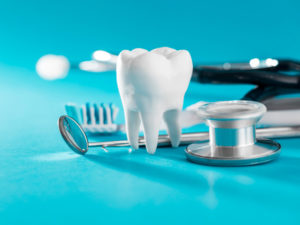As one could guess, one of the top reasons people avoid dental care outside of anxiety and fear of noisy sharp metals is the equally noisy expense that comes with it. As stated by the ADA, 35% of adults choose to skip any sort of dental work because the cost associated is sometimes too high. Good dentistry can be an expensive service for many, but there are clever ways to keep such costs to a minimum and still get the treatment you want and need. The following are 4 ways you can keep the price of dental work down.
 Maintain Good Oral Hygiene and Preventive Care
Maintain Good Oral Hygiene and Preventive Care
It should probably come as no surprise that taking good care of your teeth will benefit you in the long run. Now, this doesn’t just mean to remember brushing twice a day or flossing regularly. It means keeping your oral hygiene, including gums, in great condition as this will minimize your chances of developing some dental/oral disease, which will incur a much bigger cost down the line. Having your teeth cleaned professionally is advised, and if you’re lucky enough to have dental insurance through your current employer, most plans cover two cleanings per year, which for most is all the maintenance they’ll need.
These routine cleanings with a good dentist will save you from periodontal work, dental implants or bridges further on. During these cleanings, if your dentist uses X-rays, certain issues can be caught and addressed before spiraling into something that requires far more serious treatment.
Sometimes, a cavity may be found and your dentist will recommend it be filled, but rather the cost of a cavity fill than the cost of root canal therapy which can occur if such issues go ignored for long enough, right? Let’s say, during your check-up, a small cavity is found. This issue, when caught early, can be cleaned out anesthesia-free and filled conservatively while also saving you money in the long run. If untreated for too long, this cavity can turn into a more serious issue that will require a more costly solution, either multiple surface filling, inlays/Onlays, or crowns.
There are other preventive measures you can take to maintain proper oral and dental hygiene. Routes such as dental sealants and fluorides are not only effective but will save you and your loved ones money in the long run. Dental sealants are considered one of the top breakthrough items when it comes to preventive care as they protect teeth from decay and are appropriate as soon as a posterior tooth erupts. And fluoride helps prevent tooth decay by strengthening the enamel and helping it build resistance to acid and bacteria.
Don’t Ignore Your Back Teeth
Many people focus their oral hygiene and efforts on what’s immediately visible: their front teeth. You may find yourself brushing and flossing your front teeth (top and bottom) more than your teeth, especially the ones in the back: your molars. Though dental cleanings address your entire mouth in one procedure, this only occurs twice a year (if you’re insured, of course), leaving any upkeep of your molars up to you and your “rigorous” brushing routine. However, over time, this slight misstep can take a toll, especially if you have compromised back teeth. If and when your back tooth fails and requires an extraction (which it may, depending on severity), space often gets left there without anything to fill the gap, and this is the case often if you are uninsured and are opting for low-cost alternatives. These spaces require dental implants, which are also a big cost depending on where you go, but opting to not do so can really put your teeth in a bad position, literally. Teeth will shift and some will grow into the open space, causing misalignment and costly problems that could’ve been avoided.
Try Dental Schools/ Lectures/ Clinical Trials
For those that may not have insurance or are looking for a low-cost option, consider being a “teaching case” for dentists or reaching out to dental schools in your area. Some dentists could be interested in displaying their dental procedures in front of dental students or doctors for documentation, lectures, or article-related purposes. There are dental hygienist schools that offer low-cost routine cleanings for supervised students trying to learn how it works, though keep in mind these options will take a longer time to complete than an actual cleaning due to the educational/documenting aspects surrounding this alternative. You won’t be receiving any “lesser” treatment since these students would be monitored and instructed by a dental professional. These options, as well as undergoing clinical trials, are all good options if dental coverage isn’t available for you. Clinical trials can also address “bigger” dental and oral problems than your standard cleaning, if you find yourself suffering from serious issues, like requiring tooth extraction or more.
Another option is also low-cost clinics that can be beneficial. There are community health clinics or federally-funded health centers that offer lower-priced treatments for individuals looking for an affordable solution. You can look up centers near you and contact them for more information.
Request Financing/ Payment Plans
There are many types of payment plan options available to enable you to undergo the dental care that you have been putting off. Most of these plans have rates that are lower than what you would pay with your credit card, and many have interest-free financing available for up to 2 years. For example, let’s say you are interested in getting Invisalign to straighten your teeth, but can’t afford the $4,800 it would cost, you could get financing through Chase that would allow you to pay $200 per month interest-free for 2 years.
Some dentist offices offer discounts for full payments made in cash, though you’d need to contact your local provider if this is possible beforehand. Ask your dentist if they participate in any of these payment plan options. Dental savings plans are available but require more research on your part.

